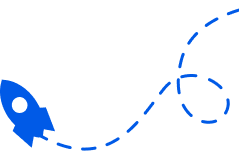Korean Curriculum


What to Expect from Our Online Korean Classes

At LINGOCIRCLE, we believe learning Korean should be a fun and enriching experience for your child. That's why our classes include a range of activities, including songs, games, and stories. Your child will also have the opportunity to practice their speaking and listening skills with our native Korean-speaking teachers.
We offer three unique learning paths, depending on your child's goals and proficiency in the Korean language.
Full Immersion or Dual Language
Is your family multi-cultural or bilingual? We offer full immersion or dual language programs taught either in Korean during the whole class or in Korean and the second language of your choice, depending on your child's primary language.
Korean Preschool, Elementary School Curriculum
Perfect for children in bilingual families or schools, we offer online Korean classes that follow the traditional Korean preschool and elementary school curriculum. This program is currently only available for early learners up to 7 years old.
Korean as a Foreign Language
Are you an English monolingual family? Want your child to become bilingual in Korean? For beginners of 8+ years old, we offer online Korean lessons online that follow the CEFR program from A1 to C2 for Korean as a Foreign Language.
Curriculum for
preschools and elementary schools
Korean Curriculum
- PS
- MS
- GS
Korean Elementary & Preschools Programs/h3>
- CP
- CE1
- CE2
Korean Elementary & Preschools Programs
Your child understands and speaks Korean
Develop and maintain oral comprehension and speech through interactions around weekly themes and Korean youth literature. Acquire vocabulary. Learn phonetics, learn to write (capital and cursive), structure thoughts, develop critical thinking and problem-solving skills
Develop all language skills (vocabulary, syntax, conjugation, orthography, oral production and writing). Learn to read using the syllabic method. Develop understanding of short then long stories. Interact, express and assert themselves. Share opinions with classmates around stories and activities. Develop complementary skills such as logic, algebra, and critical thinking.
Your child understands and speaks a few words in Korean
Develop oral comprehension and speech in Korean. Interact and express themselves around weekly themes and youth literature revolving around Korean culture. Learn phonetics, language rhythm, and acquire vocabulary. Learn to write (capital and cursive), develop critical thinking and problem-solving skills.
Develop all language skills with a focus on oral and written production. Develop phonetic skills, language rhythm, expand vocabulary, grammar, and conjugation. Learn to read in Korean using the syllabic method and learn to write in cursive. Interact, express and assert themselves. Share opinions with classmates around stories and activities. Develop complementary skills such as logic, algebra, and critical thinking.
Your child understands and doesn’t speak Korean
Develop speech through interactions around weekly themes and Korean youth literature. Learn to write (capital and cursive), develop critical thinking and problem-solving skills. Produce and repeat words and short sentences. Acquire vocabulary. Structure thoughts, develop critical thinking and problem-solving skills.
Develop oral production competencies and writing skills. Expand vocabulary. Learn Korean grammar and conjugation. Learn to construct long sentences. Learn to write in cursive. Learn to read syllables using the Alphas method. Develop complementary skills such as logic, algebra, and critical thinking.
Your child doesn’t understand or speak Korean
Develop oral comprehension and speech in Korean. Interact and express themselves around weekly themes and literature revolving around Korean culture. Learn phonetic, language rhythm, and acquire vocabulary. Learn the Korean Alphabet. Learn to write (capital and cursive). Acquire vocabulary. Structure thoughts, develop critical thinking and problem-solving skills.
Develop oral comprehension through interactions around short stories in Korean. Stimulate oral expression. Learn phonetics and language rhythm. Acquire vocabulary. Construct short sentences. Learn to write in cursive. Learn to read syllables using the Alphas method. Develop complementary skills such as logic, algebra, and critical thinking.
Methodology
The Alphas methodology I phonics
Syllabic methodology
Cognitive Development: Bloom’s Taxonomy
Remember
The 1st stage consists in memorizing, retaining, and recognizing new concepts/knowledge.
Understand
The 2nd stage consists in discussing, expressing, identifying new concepts.
Apply
The 3rd stage consists in applying information and knowledge to different situations
Analyze
The 4th stage consists in drawing connections among ideas
Evaluate
The 5th stage consists in examining information and making judgements
Create
The 6th stage consists in using new knowledge independently to create.
Copyright © 2018 - 2021 BILINGUALBEBE Unauthorized copying and distribution is prohibited




Develop Comprehension Skills

Learn Korean Phonetics

Develop Oral Production

Develop Writing and Reading Skills

Learn Korean Grammar

Develop Writing Production

Learn Korean Conjugation

Learn Korean Orthography



